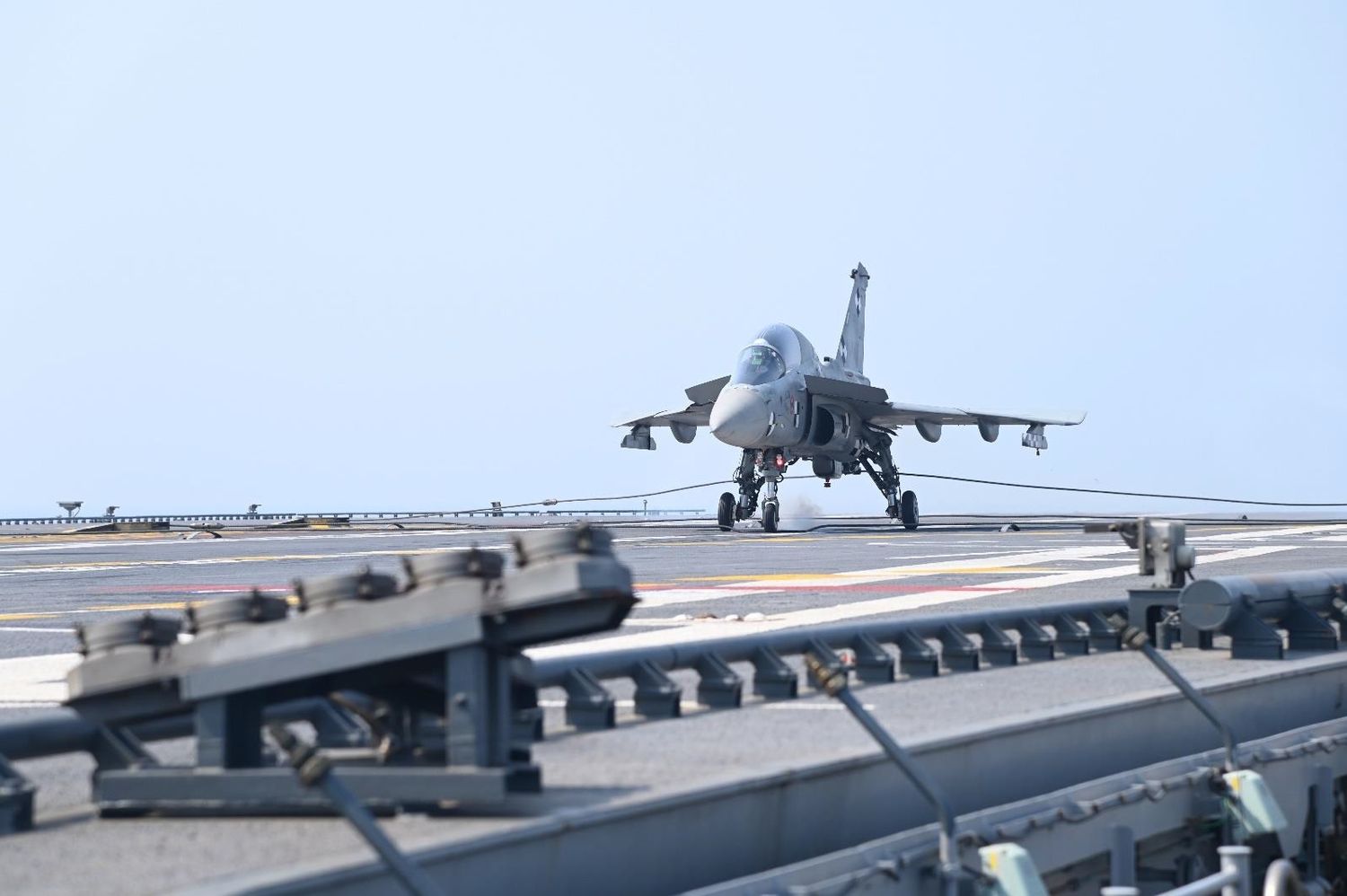Naval Tejas and MiG-29K tested aboard INS Vikrant, India’s new aircraft carrier
On a historic day, LCA Navy (naval version of the Tejas) and MiG-29K aircraft landed and took off for the first time from the deck of INS Vikrant, the first aircraft carrier designed and built in India.
LCA Navy Landing and Take Off #INSVikrant #AatmaNirbharBharat#IndianNavy #FutureProofForce@PMOIndia @DefenceMinIndia @DefProdnIndia @HALHQBLR https://t.co/t1AakOn2pi pic.twitter.com/Q9fi91tfB1
— SpokespersonNavy (@indiannavy) February 6, 2023
The Indian Navy’s new aircraft carrier INS Vikrant, which is conducting sea trials in the Arabian Sea, reached a milestone of historic importance when an LCA Navy and then a MiG-29K made a landing, and subsequent takeoff, from its deck for the first time.
#IndianNavy takes a significant step towards operationalising #IndigenousAircraftCarrier by successful landing of MiG-29K on #INSVikrant by Naval Pilots demonstrating #India's prowess in Aircraft Carrier design, construction & operations while enhancing Navy's #CombatReadiness. pic.twitter.com/AjzO1eN8QE
— SpokespersonNavy (@indiannavy) February 6, 2023
This marked the start of aviation testing of the INS Vikrant, which is expected to reach operational status later this year.
LCA Navy, the naval Tejas
The naval variant of the Indian Light Combat Aircraft (LCA) is a variant of the HAL Tejas, designed for operation aboard Indian aircraft carriers and for export.

The first landing of the LCA Navy took place in January 2020 aboard the aircraft carrier INS Vikramaditya. This was followed by 18 more successful landings and takeoffs over the next five days on the deck of the ship, demonstrating the aircraft’s suitability for naval operations.
However, the Indian Navy decided not to acquire this domestically designed light fighter, preferring to focus its resources on the purchase of more capable twin-engine aircraft such as the Boeing Super Hornet or the Dassault Rafale M (which are competing in a Navy program to replace the MiG-29K, which proved unreliable) and on the development of the TEDBF, a medium twin-engine fighter for carrier-based operations, which is being developed locally.

Although India responded to a Request for Information (RFI) issued by the US Navy for a future advanced trainer aircraft to replace the Boeing T-45 Goshawk from 2028, proposing a two-seat version of this aircraft, the U.S. Navy’s requirements changed to that of a land-based advanced trainer and LIFT aircraft, with the Indian aircraft’s chances of being selected fading in the face of competition from the Saab/Boeing T-7A Red Hawk and the Lockheed Martin/KAI T-50.
In any case, the fact that an Indian designed and built aircraft successfully landed and took off from an Indian designed and built aircraft carrier is of unquestionable historical significance.


Comentarios
Para comentar, debés estar registrado
Por favor, iniciá sesión